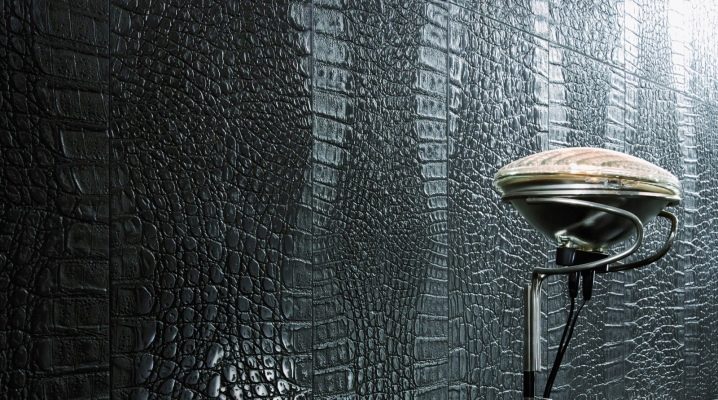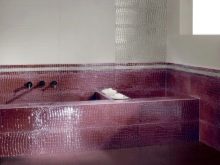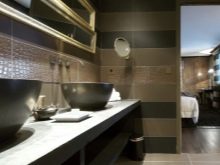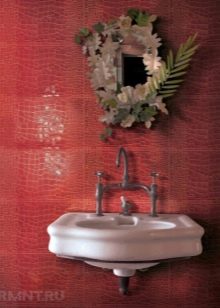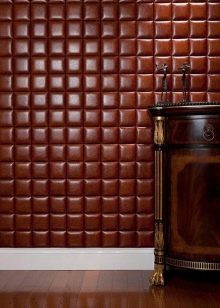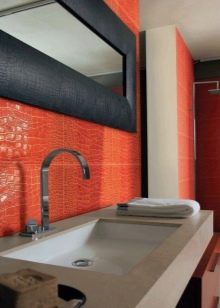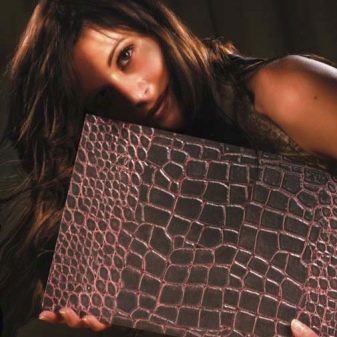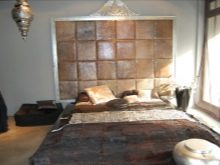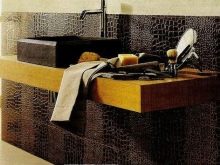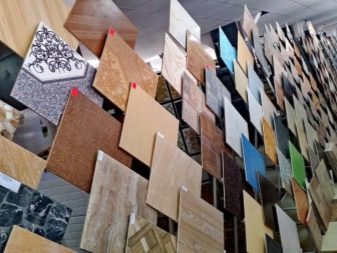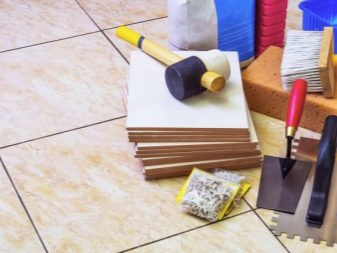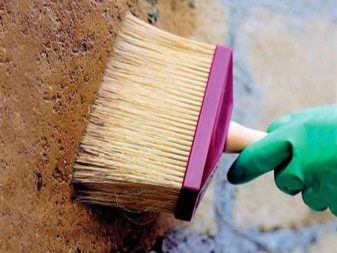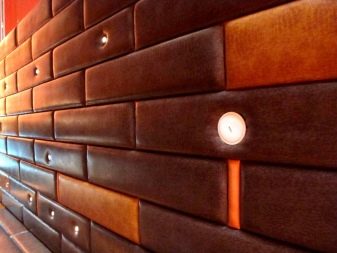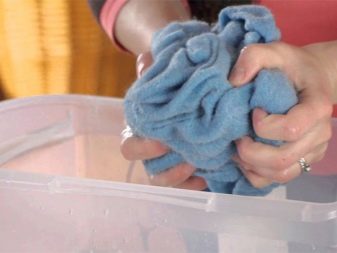Tile "under the skin": the pros and cons
Tiles under the skin - a fashionable trend of the modern interior, which has become popular recently. Leather tiles are soft and elastic to the touch. The decoration of the walls with such material allows to bring warmth and comfort to the interior of the room.
The only negative wall leather tiles - the high price.
Features and benefits
Leather tile is made of imitation leather, does not require special care (enough wet cleaning with any non-aggressive cleaning agent). It has high performance properties, resistant to abrasion, easy to cut and assembled, has a wide color gamut.
Leather tile is expensive, but this single drawback is easily covered with the pluses inherent in this material:
- durability (service life is 20 years);
- esthetic appearance;
- a wide variety of shapes, textures and colors;
- good sound and heat insulation;
- easy installation
Application
The tile under the skin is used for decorative interior decoration. Coloring material imitating zebra skin or crocodile skin is ideal for the kitchen in an exotic style (for example, in the African). In the kitchen area will look beautiful combination of leather material the color of chocolate with white or dairy furniture.
Covering under the skin will be appropriate in the guest room, bedroom or office. Replacing the usual ceramic tiles with leather, imitating the skin of predators (cheetah, tiger) or alligator, you can turn the living space into a space of a refined style and luxurious design.
A room decorated in this way will look presentable and fashionable.
Leather tile in harmony with wood. Using this combination, you can reduce financial investments in the repair and add to the interior of the room an unsurpassed sense of style. The material under the skin is used for walls, ceiling space, all kinds of decorative partitions. Thanks to the presented variety of shapes, textures and shades, everyone can find what he needs.
Wall and floor coverings are slightly different. The wall tile has three components: leather, cardboard and foam rubber, which ensures its low weight. The floor tile has a porcelain stoneware base hidden behind a decorative material, the layer of which is 3 mm.
Price
The average price for leather wall tiles is 2-3 thousand rubles. for 1 m2. Elite collection (Italian production) is much more expensive: from 4500 rubles. for 1 m2.
Russian-made floor covering will cost 2.5-4 thousand rubles. for 1 m2. Tiles of foreign production (Germany, Poland) will cost from 10,000 rubles. for 1 m2.
Where can one buy?
It is best to buy coating under the skin in online stores, since the price there is much lower than in retail outlets. If there is no time to monitor the Internet, you can use the services of specialized construction hypermarkets.
In no case do not buy leather tiles on the market, as you risk to buy a low-quality fake.
Installation
In addition to the leather covering, you will need tools and materials for tile laying:
- primer;
- cloth;
- roller;
- level;
- trowel mix;
- PVA or "liquid" nails;
- tiled knife;
- ruler;
- brush;
- pencil.
First you need to clean the surface from which the tile will be mounted from dust and dirt, as well as level it. Strong zealous, seeking to bring coverage to the ideal state, is not required. The material can be laid even on a layer of wallpaper in the case of their snug fit to the wall.
If the walls are made of plywood or chipboard, they must first be primed and the gypsum plaster present should be sanded.
Drawing tiles need to pre-mark on the wall using a level, ruler and pencil. Then the material will be glued as smoothly as possible. If you chose PVA as the mounting solution, apply it on the back of the material with a brush.
To cut the cover, use a knife. The cut edge will be even if using a ruler and a pen to make a mark in the half of the cover to be cut off and throw another 150 mm. Begin to cut not from the very edge, but with a space of 150 mm. You only need to cut a layer of cardboard and foam rubber, you need a leather layer to wrap it on the wrong side and glue it there. After the completion of these works, you need to fill and wipe the seams.When the solution is dry, remove the excess with a damp cloth.
The process of laying leather tiles on the floor is similar to the laying of conventional tiles, but there are some features. Such material is usually used in rooms for which there is no peculiar large permeability (working, sleeping area).
During the installation of soft tiles do not require the use of crosses and trowel mixture.
Care
Leather tile does not require specialized cleaning products. For her, wet cleaning with soapy water will be sufficient. Soft tiles can be vacuumed. To maintain an attractive appearance of the coating for a long time will help treatment with oils or wax.
The material can be cleaned with a 50% alcohol solution and products containing ammonia. The only thing that is not recommended to clean leather material is bleach or steam cleaners, since they damage the outer layer of the tile, making it not attractive.
And a little more information about the tile "under the skin" is waiting for you in the video below.
